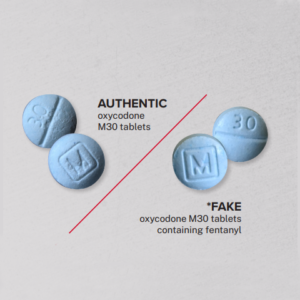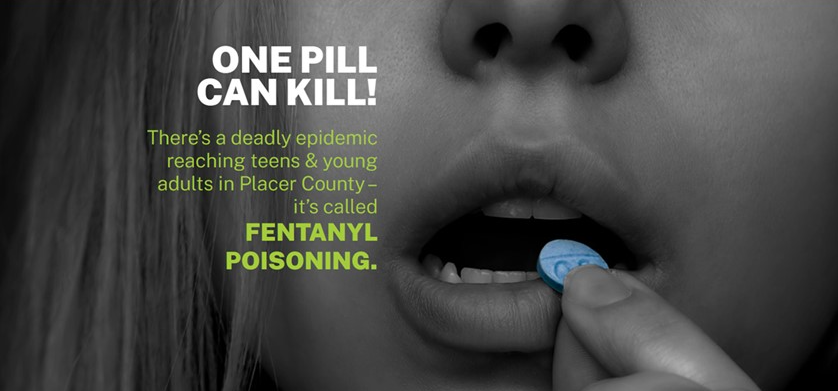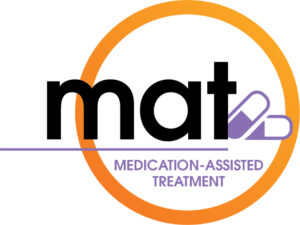Fentanyl Use in Teens: What to Look For, and How to Respond
The opioid epidemic has hit the nation hard, and California has been no exception.
But while always tragic, the group most affected by the opioid crisis has historically been older adults between the ages of 35 and 45. Teens and young adults, meanwhile, were considered less vulnerable. That appears to be changing.
Here’s a sampling of some of the recent headlines:
- 15-year-old girl died from suspected overdose in Roseville, police say
- Sacramento woman arrested after 14-year-old’s suspected overdose death in Lodi
- Teen charged with murder after 12-year-old San Jose girl dies from fentanyl overdose
- California teen’s death from fentanyl underscores dangers of social media drug markets
In 2020 – the first time in a decade – teen deaths from fatal overdoses rose sharply nationwide. For the state of California, preliminary data from 2021 indicates that 2,620 people between the ages of 15 to 34 died of opioid overdoses. This increase has mainly been driven by the rise in fentanyl, an extremely powerful synthetic opioid, circulating in the illicit drug supply.
In Placer County, for example, the office of Fresno County District Attorney Lisa Smittcamp warns of a 450% increase in fentanyl-related deaths, with half of those deaths occurring among those younger than 25 years of age.
According to an analysis of federal data by the advocacy group Families Against Fentanyl, fentanyl-related overdoses are now the leading cause of death for all Americans between the ages 18 and 45 years old.
Fentanyl addiction is very serious but recovery is possible. Monarch Sober Homes offers experienced, compassionate help for those who struggle with addiction and wish to get better.
In this article, we will explain why fentanyl abuse is on the rise among young people, how to look out for it in your child, and how to respond to it.
Why Are Young People Overdosing on Fentanyl?
There’s a simple answer to that question is: it’s being marketed to them – aggressively.
And they often don’t even know it.
California officials are warning that fentanyl is increasingly being marketed to young people, mainly via social media. Aside from through their friend groups, young people generally buy fentanyl off the internet – platforms like TikTok or Snapchat, as well as e-commerce sites – and then have it delivered to them by mail or in person.
That said, they generally don’t take fentanyl on purpose. Usually, they’re buying what they think are prescription pills: Xanax, Oxycodone, and Percocet, for example. Drug dealers have become very good at manufacturing counterfeit versions of prescription pills that are hard to distinguish from the real thing.
And, in an effort to boost profits, these drugs are often laced with fentanyl.

Because it’s so powerful (just .002 grams is enough for an overdose) traffickers cut their drugs with fentanyl as a cheap way to boost their potency. And because fentanyl is odorless, users have no way of knowing if the drug they are taking has been laced with it. As a result, a young person can be taking what they think is Perc 30s, but is actually fentanyl.
LGBTQ Substance Abuse
Studies have only recently begun looking at substance abuse patterns within the LGBTQ community. However, what data is available does suggest that those who identify as such are particularly vulnerable to substance abuse and mental health issues.
According to 2018 data from the National Survey on Drug Use and Health, for example, the rate of opioid misuse within the LGBTQ community stood at 9% of that total population, as compared to 3.8% of adults from the general adult population. The data also shows that LGBTQ youth are more likely to suffer from mental health issues such as anxiety and depression, conditions highly correlated with substance abuse.
Experts say the reason for this disparity lies in the heightened social stigma, daily stressors, and other challenges faced by sexual minorities. These individuals often face discrimination, social rejection, family discord, and other stressors, making them more vulnerable to substance abuse and mental illness than heterosexual individuals.
Monarch Sober Homes and Monarch Recovery Center are LGBTQ-friendly and welcomes individuals from all walks of life looking for a safe and supportive environment to recover from substance abuse.
What Can Be Done?
This problem will not be solved overnight and requires parents, schools, local businesses, and other stakeholders to get actively involved.
Parents
Parents can do several things to protect their teens against substance abuse.
Talk to Your Kids
It’s important to keep the lines of communication open with teens. Research indicates that parental involvement can reduce the likelihood of adolescent substance abuse.
That means asking questions about what’s going on in their lives, and trying to avoid being overly judgemental or critical as you listen to them. And warn them about the dangers of drug use, especially in light of the ongoing fentanyl epidemic.
Learn to Recognize the Signs of Fentanyl Abuse
Parents should also know the signs of fentanyl abuse so they can recognize if necessary.
Here are some behavioral signs to watch for which can indicate teen fentanyl abuse:
- Loss of interest in usual activities
- Declining grades
- Isolation from family and friends
- Spending time with new, different friends
- A sudden change in spending habits: more frequent requests for money or a decrease in available spending money
Aside from behavioral changes, here are some physical signs of fentanyl abuse:
- Slurred speech
- Lack of motivation; lethargy
- Irritability
- Pinpoint pupils
- Labored or slow breathing
Schools
Schools occupy a unique and powerful place in the lives of young people. As such, they can and should use their position to educate not only students but parents as well, on the ongoing fentanyl epidemic. Drug education programs can make a huge impact here, especially when they enlist parents as equal partners.
One example of this can be seen in the efforts of Clovis Unified School District to spread awareness of the problem through regular bulletins updating parents with current information, warnings, and ways to respond to fentanyl abuse.
Local Businesses
One of the more recent efforts to combat rising youth fentanyl overdoses has been local businesses making fentanyl test strips freely available to patrons. Fentanyl test strips check for the presence of fentanyl in a substance before it is used.
To use a fentanyl test strip, all that’s needed is to dissolve a small amount (smaller than a grain of rice) of the drug in water, then dip the strip in the solution Similar to a pregnancy test, lines appear on the strip after a few minutes to indicate results: one line indicates the presence of fentanyl; two lines is a negative result.
While younger users may lack the maturity and foresight to use fentanyl test strips, there are signs that their use is growing and gaining acceptance, which may influence younger people to take advantage of them. For example, bars, restaurants, and music venues in California are now offering free test strips to their customers.
Where Can I Get Fentanyl Test Strips?
An increasing number of businesses in California have begun offering fentanyl test strips. There are also a variety of harm reduction organizations across Northern California that can assist in acquiring them.
In Sacramento, these include:
- Harm Reduction Services
- Safe Alternatives Thru Networking and Education (SANE)
- Sacramento LGBT Center
- Gender Health Center
- Sunburst Projects
Here is a map of other harm reduction organizations in Sacramento.
There are also a variety of organizations in San Francisco that can help people obtain fentanyl test strips.
These include:
- San Francisco AIDS Foundation
- Glide Harm Reduction Services
- Homeless Youth Alliance
- San Francisco Drug Users’ Union
- San Francisco Community Health Center
Here is a map of other harm reduction organizations in San Francisco and the Bay Area.
Finally, the California Department of Public Health also provides fentanyl test strips through all of its needle exchanges.
How is Fentanyl Addiction Treated?
The gold standard for treating substance use disorder (SUD) is the use of medication to reduce withdrawal symptoms in combination with behavioral therapy to address the underlying issues driving the SUD. This combined approach is known as Medication-Assisted Treatment (MAT).
Scientific studies and years of experience have shown that MAT provides the best likelihood of successful recovery. The exact type of both medication and therapy is tailored to the specific needs of the individual person being treated.
As a synthetic opioid, MAT medications used for fentanyl abuse are the same as those used for other opioid SUDs.
These are:
- Methadone
- Buprenorphine
- Naltrexone
Each of these medications has particular advantages and disadvantages, and the prescribing physician will determine which is best for the patient.
The importance of medication is that it can alleviate physical sickness and withdrawal cravings, providing an invaluable service as the therapy takes time to address underlying issues driving the addiction.
Monarch is MAT-Friendly
Monarch recognizes the importance of MAT medications for fentanyl and other opioid addictions. Although we do not prescribe medication, we can refer clients to local, affordable clinics that do prescribe MAT medication.
At our Monarch Recovery Center, we offer affordable, evidence-based outpatient therapy programs for those aged 18 and older. For those under 18, a range of California programs offer MAT for adolescents. Monarch is happy to provide referrals for anyone in need of such programs.
In addition, our sober living homes offer MAT services – the only ones in Sacramento or San Francisco to do so. While we cannot prescribe, our trained Monarch professionals are on-site to ensure MAT medications are used safely and responsibly, allowing residents to focus on recovery in a clean and structured environment.
Substance Abuse Treatment in Northern California
As mentioned before, medication is just one side of effective treatment; therapy is the other. This is provided at our Monarch Recovery Center, a beautiful campus located in Sacramento.
There, surrounded by healing nature – including shady trees, koi fish ponds, and waterfalls – you can come to benefit from a range of therapies.
These therapies can include:
- Recovery planning
- Individual, group, or family counseling
- Treatment planning using SNAPs (Strengths, Needs, Abilities, Preferences)
- Relapse prevention strategies
- 12-step programs
- Meditation and mindfulness
- Training in life skills such as time management
- Other therapies and interventions as necessary
Monarch Homes leads Northern California in providing upscale and professionally managed recovery and sober living programs that treat the whole person. Our programs welcome adults from all walks of life, without regard to race, cultural heritage, gender, sexual orientation, physical ability, or socioeconomic status.
Recovery is a long road but you don’t have to walk it alone. Everyone at Monarch is either in recovery or is a substance abuse recovery specialist. Contact us today to learn more about our beautiful facilities, treatment programs, and welcoming community.
We look forward to helping you start your recovery journey.
Sources:
Ackard, D. M., Neumark-Sztainer, D., Story, M., & Perry, C. (2006). Parent-child connectedness and behavioral and emotional health among adolescents. American journal of preventive medicine, 30(1), 59–66.
Bertorelli, A. (2022, June 20). California teen’s death from fentanyl underscores dangers of social media drug markets. Fox News.
California Department of Public Health. (n.d.). Welcome to the California Overdose Surveillance Dashboard. CA Overdose Dashboard. Retrieved August 4, 2022.
Centers for Disease Control and Prevention. (2021, December 30). Drug Overdose Deaths in the United States, 1999–2020. Centers for Disease Control and Prevention.
Clovis Unified School District. Fentanyl Abuse on the Rise Among Youth.
Daniulaityte, R., Sweeney, K., Ki, S., Doebbeling, B. N., & Mendoza, N. (2022). “They say it’s fentanyl, but they honestly look like perc 30s”: Initiation and use of counterfeit fentanyl pills. Harm Reduction Journal, 19(1).
Families Against Fentanyl. (2022). Fentanyl poisons our communities. familiesagainstfentanyl.org. R
Frandino, N. (2022, April 21). ‘We’re done with dead kids’: U.S. Bars are handing out free fentanyl tests. www.reuters.com.
Kafka, R. R., & London, P. (1991). Communication in relationships and adolescent substance use: the influence of parents and friends. Adolescence, 26(103), 587–598.
Lee, H. (2022, January 26). Teen charged with murder after 12-year-old San Jose girl dies of fentanyl overdose. KTVU FOX 2.
Lee, H. (2022, January 26). Teen charged with murder after 12-year-old San Jose girl dies of fentanyl overdose. KTVU FOX 2.
Serrin, G. (2022, August 20). Placer County Officials Warn about ‘rainbow’ fentanyl going around. KCRA.
Serrin, G., & Manna, O. (2022, February 26). Sacramento woman arrested after 14-year-old’s suspected overdose death in Lodi. KCRA.
U.S. Department of Health and Human Services. (2022, June 3). Substance use and suds in LGBTQ* populations. National Institutes of Health.



